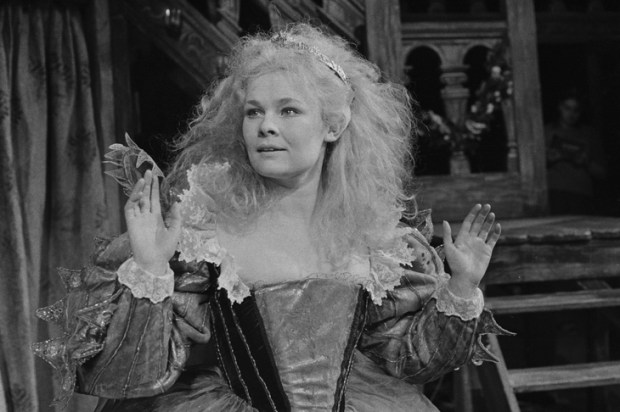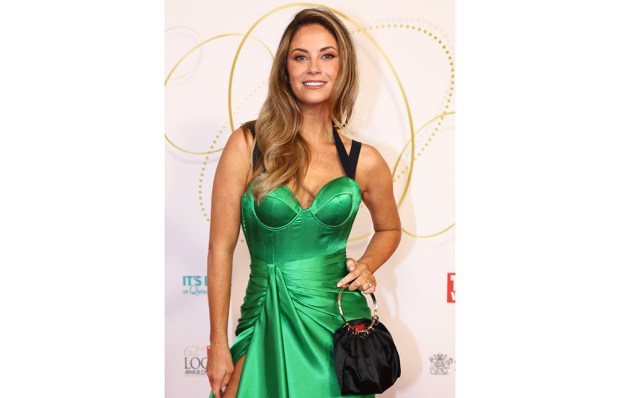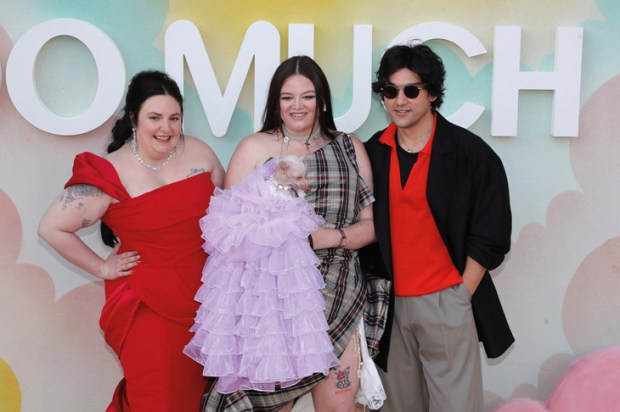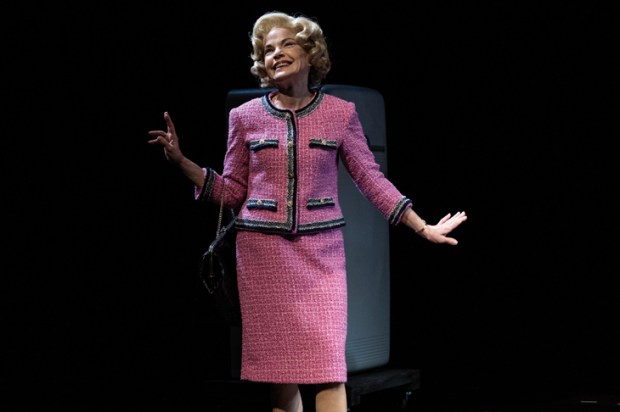Last week saw the streaming of the sixth and final episode of Happy Valley, the Yorkshire policier with the great Sarah Lancashire as a tough-as-they-come old uniformed copper who is nevertheless a woman of compassion and James Norton as the imprisoned psychopath who raped her daughter and got her pregnant. Lancashire is stout, sixtyish and unflappable but worried sick. Norton is brilliantly starry and has committed hideous atrocities. The central complicating factor in this third season is that Lancashire looked after the son her daughter bore the monster who tormented her, and the boy – thoughtful and sensitive – is fascinated by his creepy dad. And Norton in a brilliant performance that matches Lancashire’s and is in superb counterpoint with hers, is showing some signs of human affection for the child of his loins who has seen him escape like Superman from a court appearance.
Happy Valley got higher ratings than Harry and Meghan and it represents British television at some zenith of watchability. It was too difficult for someone under its spell not to watch each of the hourly episodes as they came out – and they certainly had a massive monumental quality so crowded with dramatic incident that they seemed longer than 60 minutes – even though the happy souls who had the patience to wait are to be envied for the six-hour feast of suspense and often heartrending drama they have before them.
There is a subplot about a creepy persecuting high school teacher and his beautiful wife who has a problem with prescription drugs and an utterly credible pharmacist who supplies them and then there are the fragilities of Lancashire’s relationship with her sister played by Siobhan Finneran.
Happy Valley concludes with an extraordinary scene between Lancashire and Norton which takes the breath away and makes you realise how much popular mainstream television can achieve when it is utterly serious and seriously ambitious about its ability to leave an audience spellbound.
James Norton first played the criminal psycho some years ago but he shows in this third series of Happy Valley the range he has as an actor which is at least equal to his manifest glamour. He was very likable as that vicar who was also a sleuth but there has always been the danger with him that he will just be a perpetual juvenile lead, forever stuck in Freddy Eynsford-Hill mode –remember the foppish guy in My Fair Lady and Pygmalion?
He was a rather impressive Stephen Ward but the sense of something a bit light about his dramatic presence wasn’t helped by that kids-galore War and Peace – with Paul Dano absurdly inadequate as the bear-like Pierre, the Anthony Hopkins role – but Norton (while being a bit better) was nothing like as close to Tolstoy’s conception as Alan Dobie in that Seventies BBC TV version.
Whereas in Happy Valley he has weight as well as – and this sounds weird with a working class character – a kind of aristocratic panache which is histrionic and authentic at the same time.
You can watch Happy Valley on Binge which is now showing a range of classic films including Kubrick’s Spartacus, Gaslight and the late John Ford’s masterpiece Cheyenne Autumn.
The one I saw was Carol Reed’s 1968 film of that wonderful musical Oliver! by Lionel Bart. Carol Reed in his heyday made The Third Man with Orson Welles as Harry Lime, the IRA thriller Odd Man Out with James Mason, Fallen Idol with Ralph Richardson, and – somewhat later – Our Man in Havana, the Graham Greene comedy with Alec Guinness about vacuum cleaners and nuclear weapons.
Reed is the one British director whose reputation comes close to that of David Lean. And it was Lean who made that eerie and terrifying film of Oliver Twist with the teenage Anthony Newley as the Artful Dodger and Alec Guinness – before his saintly phase – as a scarifying Fagin.
Lionel Bart’s Oliver! captures the gusto of Dickens’ story and distils it into those wonderful Cockney songs like ‘Consider yourself’ and ‘Oom Pah Pah’ while also providing some marvellous Yiddisher songs for Fagin such as ‘You’ve got to pick a pick a pocket or two’ and ‘I’m reviewing the situation’. Nancy is played in the film by Shani Wallis who did Bells Are Ringing here at the Princess Theatre in 1958 rather than the original Nancy, Georgia Brown, or Dame Sheila Hancock who played the role in Melbourne in 1961.
Barry Humphries who played Fagin at one point in the original production has revived it since in a very grand characterisation of the old crook as a European Jew and the performance had such a staggering authority that one of this country’s greatest actors who you would think would be born to play Fagin with his mastery of zany physical comedy and his ability to make a character role shine like the sun was apparently convinced that he couldn’t possibly equal Humphries.
The film of Oliver! – Reed’s only musical – is very grandly conceived in its ensemble sequences and very late-Sixties in its physical earthiness but it doesn’t sport stars: Ron Moody the original stage Fagin is superb but would hardly have attracted audiences in America’s mid-west and Oliver Reed as Bill Sikes was at the outset of his career.
So what star could have played Fagin? Sir Alec perhaps, but it would have been a weird revisiting and he was already on the way to that saintly quality he was to exhibit as everyone from Smiley to Obi Wan, which made Peter Sellers send him up as Sir Eric Goodness. In fact the most viable starry contender was probably Sellers himself.
By the way, if you want to experience Dickens’ masterpiece listen to the complete version done by the woman who played Sellers’ mother when Geoffrey Rush played the melancholy goon – Miriam Margoyles. She can effortlessly capture Oliver asking for more and her vibrant mezzo voice makes for a rivetingly sinister Fagin as well.
One final note on the great lord of thieves. The second Australian production of Oliver! in 1966 had the English actor Richard Wordsworth (yes, of that ilk) and it’s impossible to imagine him bettered too.
Got something to add? Join the discussion and comment below.
You might disagree with half of it, but you’ll enjoy reading all of it. Try your first month for free, then just $2 a week for the remainder of your first year.













